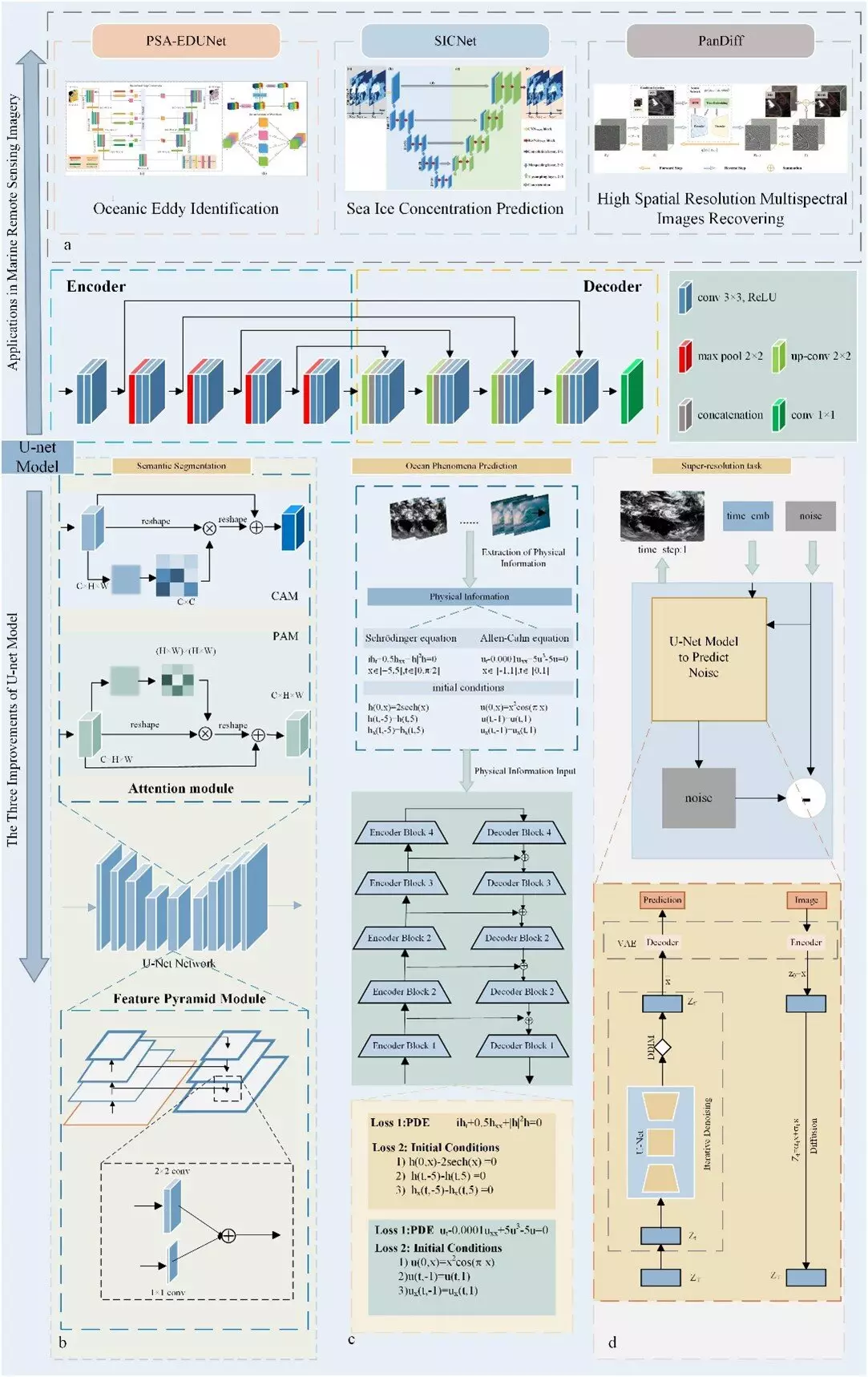The advancement of technology and artificial intelligence has reshaped a myriad of sectors in recent years, and ocean remote sensing appears to be no exception. Among the emerging tools is U-Net, a convolutional neural network (CNN) initially developed for medical imaging tasks that is now being evaluated for its effectiveness in marine research. While the potential of U-Net in this new role is promising, its current framework may necessitate considerable enhancements to meet the unique demands of oceanographic studies. Recent research published in the Journal of Remote Sensing highlights both the capabilities and shortcomings of U-Net, presenting a roadmap for improvement.
U-Net has gained its reputation primarily through its efficacy in semantic segmentation, particularly within medical imaging, where it is used to isolate and analyze various components of images. Its architecture, characterized by a contracting path that captures context and a symmetric expanding path that enables precise localization, makes it highly suitable for differentiating between various classes within an image. However, as researchers pivot to utilizing U-Net for ocean remote sensing, adaptations are essential to fully harness its capabilities in this domain.
In the realm of oceanographic research, U-Net’s architecture presents several challenges related to the segmentation of marine organisms and physical features, such as ice formations and algae blooms. The model’s existing segmentation tasks require refinement to distinguish subtle variations in oceanic images. Improvements in this area could enhance U-Net’s ability to identify small targets such as fish schools, floating debris, or specific types of algal blooms which are essential for monitoring environmental changes and biodiversity.
Further complicating matters are forecasting tasks, which involve predicting the behavior of ocean features based on historical data. The U-Net model has seen preliminary applications in this space, such as with the Sea Ice Prediction Network (SIPNet). SIPNet demonstrated U-Net’s potential by incorporating an encoder-decoder structure—an approach that might need to be refined further to enhance predictive capabilities. Successful forecasting hinges not only on structural adaptations but also on the integration of temporal and spatial data analysis techniques that can bolster the model’s accuracy.
In addressing the need for robust segmentation, introducing attention mechanisms could provide the U-Net model with the capability to focus on relevant features across varying distances. Enabling the model to discern between expansive areas of water and localized ice formations, for instance, is critical for accurate ocean analysis. This approach will improve the model’s efficacy, leading to better detection of minute features critical for ecological studies.
Moreover, super-resolution tasks possess significant implications for image clarity and detail, which are paramount in oceanographic applications. Techniques like employing diffusion models are suggested to mitigate the issue of image blurring. Achieving clarity necessitates an understanding of correlations between high- and low-resolution images, and this aspect can greatly benefit from further exploration. Utilizing models like PanDiff, capable of merging high-resolution panchromatic images with lower-resolution multispectral images, could lead to enhanced feature extraction and ultimately sharpen the outputs provided by U-Net.
While the adjustments outlined demonstrate significant potential for improving U-Net’s performance in ocean remote sensing, it is imperative to recognize that collaboration with other systems and computational techniques could amplify these efforts. Researchers are only beginning to uncover the solution sets that could arise from integrating U-Net with alternative neural network architectures or machine learning frameworks. The holistic exchange of ideas between disciplines can accelerate innovation, yielding transformative tools that not only streamline oceanographic studies but also tackle larger environmental issues.
While U-Net has established itself as a robust framework in medical imaging, its transition to ocean remote sensing requires thoughtful modifications and an integrative approach to meet the nuances of marine research. The insights shared by researchers pave the way for future enhancements, pointing toward the model’s capability to address pressing ecological challenges. With ongoing refinement and interdisciplinary collaboration, U-Net could indeed revolutionize how we observe and analyze our oceans, providing critical data essential for both scientific understanding and environmental conservation.


Leave a Reply